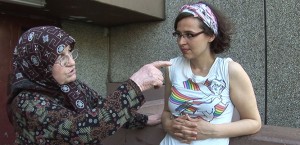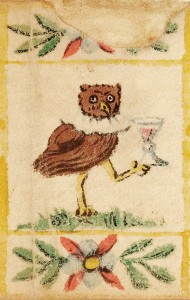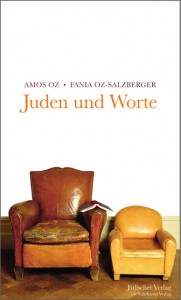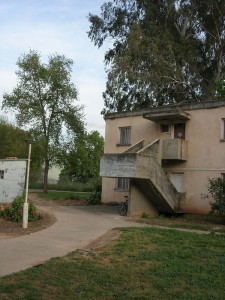
Canan Turan with her grandmother
© Adriana Uribe
In our series of events “New German Stories” we present different perspectives on the immigration country Germany. That immigrants from Turkey, Vietnam, Poland, India and Cameroon and their descendants have stories to tell is nothing new—the novel twist is, that they present them here as German stories. On Tuesday, 8 July, director Canan Turan will be a guest of the Academy of the Jewish Museum. In her film KIYMET, she tells the story of her grandmother, who migrated to Berlin from Turkey in the early 70s. We asked Canan three questions about her project:
How did the idea to make a film about your grandmother Kıymet come about? → continue reading
Preparing for the Educational Program on the Exhibition “The Creation of the World”

Detail from a Megilla (Esther scroll), 1750-1800, Alsace
© Braginsky Collection, Zurich, photo: Ardon Bar-Hama
As a part of the educational program accompanying the exhibition “The Creation of the World: Illustrated Manuscripts from the Braginsky Collection” we’re offering the workshop “But the Snake was Craftier…” about telling and passing down stories from generation to generation. Since very few of the schoolchildren who will participate in the workshop can read Hebrew, we’ll be looking closely at the illustrations. In addition to portrayals of David with the harp and Adam and Eve in the manuscripts, our program looks at the megillot, or Esther scrolls, with their illustrations. Six scrolls have been unrolled to their full length for the exhibition.
Before we take participants in to see the exhibition, a guide will tell the story of Esther. During this conscious act of listening, each person generates pictures in his or her own mind’s eye. Afterwards, the group visits the exhibition and looks at the Esther scrolls with a magnifying glass to re-discover the scenes they’ve heard about.
To prepare for this workshop, we consulted a storytelling expert. Ten museum employees met with Prof. Dr. Kristin Wardetzky to practice storytelling under her tutelage. The first chairwoman of the Society for the Art of Storytelling, Prof. Wardetzky also founded the storytelling department at the Berlin University of the Arts’ theater education department.
Our two-day workshop with Prof. Wardetzky enthralled us all. → continue reading
A Birthday Tribute to an Inquisitive Storyteller

Book cover of the German edition of “Jews and Words”
© Jüdischer Verlag im Suhrkamp Verlag
On the occasion of his 75th birthday on 4 May, we wish to congratulate Amos Oz, a great writer who visited the Jewish Museum Berlin no less than twice last year. The award-winning Israeli author—he has received, inter alia, the Peace Prize of the German Book Trade (1992) and, more recently, the Franz Kafka Prize for Literature (2013)—and his daughter, the historian Fania Oz-Salzberger, presented their jointly written book Jews and Words (2012) here last October. In four highly entertaining chapters, “secular Jewish Israelis” draw on the genealogy of reading and writing to trace historical continuity in Jewish traditions. They ask which female poet may have penned the Song of Solomon, reflect on other “vocal women,” and philosophize on matters such as the importance of time and the interplay of collectivism and individuality.

Building in a real kibbutz, photo: Mirjam Bitter

In March 2013, Amos Oz paid a visit to the Museum wearing his literary author’s hat, so to speak, to present his latest publication Between Friends (2013, Hebr. original Be’in Khaverim 2012). The eight interconnected short stories in the volume are set in the fictitious Kibbutz Yekhat and immediately attest the author’s familiarity with kibbutz life. Oz left his intellectual father’s home for a kibbutz at the age of fourteen and a half, and lived and worked there for three decades. His descriptions of typical kibbutz settings—the communal laundry, kitchen, and dining room, the cowsheds and chicken coops, huge orchards and swimming pool—instantly made me feel at home, too, since I lived for a while on a kibbutz in the late 1990s. Discussions at Yekhat about the children’s house, on the other hand, situate the action specifically in the 1950s, the Golden Age of kibbutzim.
The stories deal with the universal constants of human nature: love, loneliness, and the struggle to make major decisions in life. → continue reading




